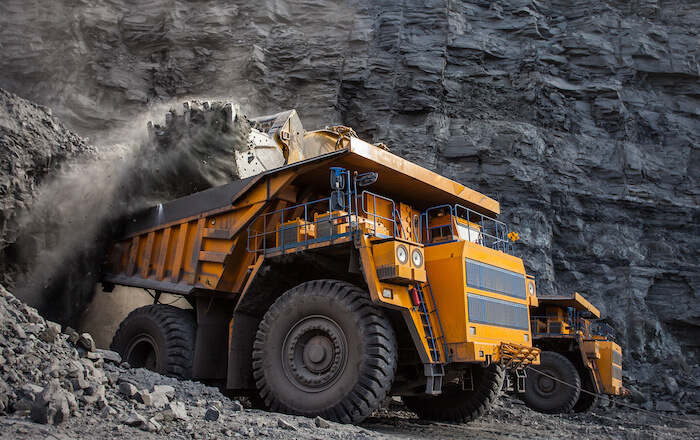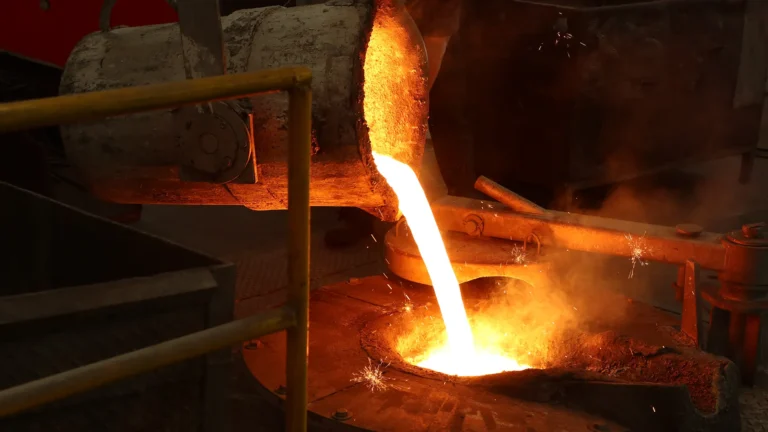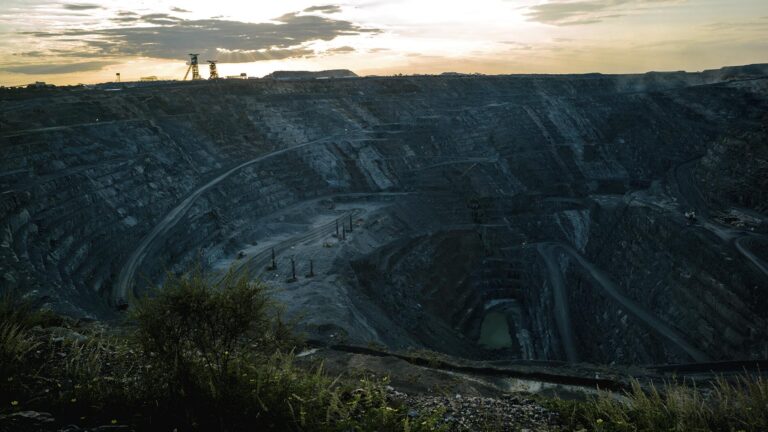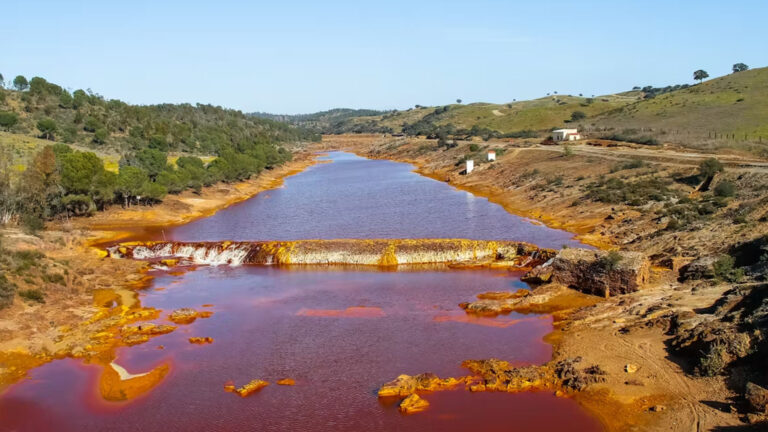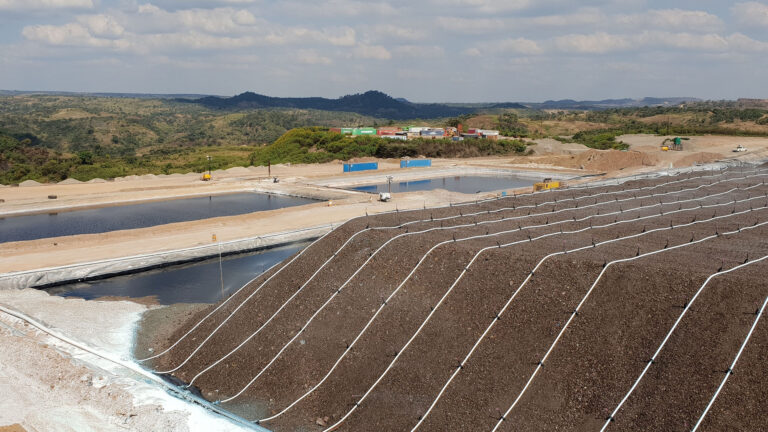The mining industry involves the extraction of valuable minerals and metals from the earth’s crust. It plays a crucial role in economic development, providing the raw materials needed for construction, manufacturing, and technological innovation. From coal and petroleum to copper, iron ore, lead, and rare earth elements, mining supports global infrastructure and energy systems.
Mining is categorized into several sectors including:
- Metal ore mining (e.g., gold, iron ore, lead, copper)
- Nonmetallic mineral mining (e.g., limestone, sand)
- Coal mining
- Oil and gas extraction
The history of mining dates back to prehistoric times. Flint mines are among the earliest known mining sites, where prehistoric people mined flint for tools and weapons due to its ability to break into sharp shards. These mined flint artifacts highlight the technological development of early societies.
The diversity in mineral deposits and the complexity of extraction methods mean mining operations vary widely in scope, scale, and impact. Open pit mines, for example, are located on the earth’s surface and involve removing large quantities of overburden to access ore bodies.
Minerals are naturally occurring inorganic substances with specific chemical compositions and crystal structures, often separated from other rocks and minerals during processing.
Introduction to the Mining Industry
The mining industry has been a cornerstone of human civilization since prehistoric times, when early societies extracted flint and other minerals to create tools and weapons. Over millennia, mining has evolved from small-scale, manual operations to highly sophisticated, technology-driven enterprises that shape the modern world. Today, the industry encompasses a wide range of activities, from the extraction of metal ores and nonmetallic minerals to coal mining and oil and gas extraction.
Mining companies operate across diverse environments, from open pit mines on the earth’s surface to deep underground mines that access valuable ore deposits far below. The sector is divided into major categories, including metal mining, nonmetallic mineral mining, coal mining, and energy resource extraction. Each plays a vital role in supplying the building blocks for infrastructure, manufacturing, and energy production.
The mining process involves a series of complex steps—exploration, development, extraction, processing, and rehabilitation—requiring the expertise of mining engineers, geologists, and a skilled workforce. As a result, the mining industry not only fuels economic development but also drives technological innovation and supports entire communities around the globe.
Metal Mining and Its Importance
Metal mining focuses on the extraction of metals such as gold, copper, and iron—materials critical to industrial and technological advancement. Iron ore, in particular, is a fundamental raw material for steel production and supports infrastructure development worldwide. Lead is another key metal, valued for its use in industries such as automotive batteries, electronics, and construction. These metals are used in everything from buildings and transportation to electronics and renewable energy systems.
Key points:
- Precious metals like gold and silver are valued for investment and industrial applications.
- Base metals like copper, iron, and lead form the foundation of construction and manufacturing.
- Mining engineers ensure the safe and efficient extraction of these materials.
- Rare earth elements are becoming increasingly important due to their role in high-tech devices and green technologies.
Critical Minerals and Their Role
Critical minerals are essential for modern technologies but are vulnerable to supply chain disruptions. They include:
- Rare earth elements
- Lithium
- Cobalt
- Graphite
These minerals are crucial for:
- Renewable energy technologies (e.g., wind turbines, solar panels)
- Electric vehicle batteries
- Electronics and defense systems
The mining sector is investing heavily in the exploration and sustainable extraction of these minerals, with growing attention to recycling and efficient resource use.
Mining Methods and Techniques
There are two primary mining methods:
- Surface mining (open-pit, strip mining): Suitable for shallow mineral deposits.
- Underground mining (room and pillar, block caving): Used for deep-seated ore bodies.
Mining operations follow a multi-stage process. These processes include exploration, extraction, processing, and rehabilitation to efficiently obtain resources while managing environmental and safety concerns:
- Exploration – locating and evaluating mineral deposits, where individual entrepreneurs often play a key role in the initial discovery of resources.
- Development – planning infrastructure and extraction techniques.
- Extraction – removing the ore from the ground; valuable minerals are often found within rock formations and must be separated from surrounding rocks.
- Processing – refining minerals into usable products; raw minerals or ores are processed to isolate desired metals or substances.
- Rehabilitation – restoring the environment post-mining.
Exemplary mine operations are recognized for safety awards and innovative land reclamation efforts, highlighting achievements in both safety and environmental stewardship.
Technological advancements such as autonomous trucks, drones, and AI analytics are revolutionizing the efficiency and safety of mining operations.
Global Demand and Market Trends
Global demand for minerals and metals continues to surge, driven by rapid urbanization, population growth, and the accelerating pace of technological advancement. As many countries invest in infrastructure and transition to renewable energy, the need for critical minerals such as lithium, cobalt, and rare earth elements is reaching unprecedented levels. These valuable minerals are essential for manufacturing electric vehicles, wind turbines, solar panels, and advanced electronics.
Market trends indicate a growing emphasis on securing reliable supplies of mineral resources, particularly as supply chains face disruptions from geopolitical tensions, trade restrictions, and environmental regulations. Developing nations are playing an increasingly important role in the production of key minerals, while established mining regions are investing in new exploration and more efficient mining methods to meet rising demand.
The mining sector is also witnessing a shift toward sustainable practices and responsible sourcing, as consumers and governments demand greater transparency and lower environmental impact. This evolving landscape is prompting mining companies to innovate, diversify their portfolios, and collaborate internationally to ensure the steady flow of mining materials that underpin the global economy.
Environmental Considerations
Mining has significant environmental impacts, including:
- Deforestation
- Soil erosion
- Water contamination
- Greenhouse gas emissions
- Habitat destruction
Coal dust generated during mining is a major health hazard, as inhaling coal dust particles can lead to respiratory diseases such as black lung.
To address these, the industry is adopting:
- Sustainable practices
- Environmental monitoring systems
- Tailings management
- Land reclamation efforts
Miners play a key role in implementing safety measures and contributing to successful land reclamation achievements.
Environmental impact assessments are now a standard requirement for project approval and community support.
Economic Benefits of Mining Activities
The mining industry is a powerful economic engine. Benefits include:
- Job creation (both direct and indirect)
- Foreign direct investment (FDI)
- Infrastructure development
- Increased government revenues via taxes and royalties
- Development of local economies and supply chains
The multiplier effect of mining stimulates activity across various industries including logistics, engineering, and financial services.
Overall, the economic impact of the mining industry is significant, driving national and global GDP, creating jobs, attracting investment, and supporting the growth and stability of economies worldwide.
Social Implications and Responsibility
Mining affects communities both positively and negatively. Key social issues include:
- Indigenous rights and land ownership
- Forced displacement
- Child labor
- Health and safety of workers
To mitigate these impacts, companies are increasingly adopting:
- Social impact assessments (SIA)
- Corporate social responsibility (CSR) programs
- Stakeholder engagement
- Transparency initiatives like EITI (Extractive Industries Transparency Initiative)
Technological Advancements and Innovation
Modern mining is embracing innovation:
- Automation and robotics reduce labor risk and increase efficiency.
- Big data analytics optimize operations and predict maintenance needs.
- AI and machine learning improve exploration and mineral identification.
- Blockchain enhances traceability in the mineral supply chain.
- Remote sensing and drones provide better site monitoring and mapping.
These technologies not only boost productivity but also enhance environmental and safety outcomes.
Sustainable Practices and Renewable Energy
Sustainability is becoming central to mining operations:
- Integration of solar and wind energy into mining operations
- Use of electric or hydrogen-powered mining equipment
- Implementation of closed-loop water systems
- Reduction of carbon emissions through cleaner technologies
Circular economy practices such as metal recycling and mine site repurposing are also gaining traction.
Regulatory Frameworks and International Cooperation
Mining is governed by local laws and international guidelines. Key components include:
- Mining acts and licenses
- Environmental protection laws
- Labor regulations
- International standards (e.g., ISO, IFC Performance Standards)
Global cooperation is vital for:
- Tackling illicit mining
- Ensuring ethical sourcing of critical minerals
- Addressing global challenges like climate change and resource scarcity
Organizations like the UN, World Bank, and ICMM (International Council on Mining and Metals) play a pivotal role in shaping global mining practices.
Challenges and Future Outlook
Despite its critical importance, the mining industry faces a host of challenges that will shape its future trajectory. Resource depletion in mature mining regions, stricter environmental regulations, and the need to minimize the environmental effects of mining activities are pushing companies to adopt more sustainable mining methods and invest in advanced technologies. Issues such as water scarcity, waste management, and the impact of mining operations on the surrounding landscape require ongoing attention and innovation.
Social challenges, including the need to respect indigenous rights, ensure community development, and maintain a social license to operate, are increasingly central to mining law and corporate strategy. Mining companies must balance economic development with the well-being of local communities, addressing concerns related to health, safety, and equitable benefit sharing.
Looking ahead, the future of mineral mining will depend on the industry’s ability to adapt to changing market conditions, embrace digital transformation, and implement robust safety measures. The integration of renewable energy, automation, and circular economy principles will be key to reducing the environmental footprint of mining operations. By fostering collaboration between governments, industry leaders, and local stakeholders, the mining sector can continue to provide the essential resources that drive progress—while ensuring a more sustainable and inclusive future for all.
Conclusion
The future of mineral mining presents both vast opportunities and complex challenges. As global demand for minerals rises, especially for critical and rare earth elements, the industry must adapt by embracing innovation, sustainability, and social responsibility. With the right policies, technologies, and partnerships in place, mining can continue to be a cornerstone of economic progress while minimizing its environmental and social footprint.
This transformation is not just about extracting more—but about extracting better.

